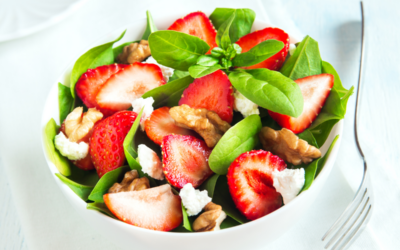Summary of key points
American cheese is a processed cheese with a mild and creamy flavor known for its smooth melting properties. On the other hand, cheddar cheese, a natural cheese, offers a sharper taste, crumbly texture, and diverse flavors. Both kinds of cheese have distinct characteristics and are used in different culinary applications based on flavor, texture, and melting capabilities.
Regarding cheese, American cheese, and cheddar are two popular choices that grace many households’ tables. Yet, while both are widely consumed, they possess distinct characteristics that set them apart.
This article will explore the differences between American cheese and cheddar. This includes their origin, production processes, flavor, and texture profiles, melting properties, culinary applications, nutritional content, varieties, aging, and cultural significance.
Origin and history of American and cheddar cheeses
American cheese, often associated with burgers and grilled cheese sandwiches, has a relatively short history. It was developed in the late 19th century to respond to the growing demand for easy cheese to produce, melt, and distribute.
It was initially made from a blend of cheeses, such as cheddar and Colby, to achieve a consistent texture and flavor. Over time, American cheese evolved into a processed cheese product that could be easily sliced or melted.
Cheddar cheese, on the other hand, has a long and storied history that dates back centuries. It originated in the English village of Cheddar in Somerset. Cheese-making techniques have been honed down over generations.
Traditionally, cheddar cheese was made using raw milk and had a natural aging process that contributed to its distinctive flavor and texture. As a result, it became trendy in the United Kingdom and later spread to other parts of the world, including the United States.
Understanding the origin and history of American cheese and cheddar provides insight into the different approaches to cheese production. It also provides insight into the cultural contexts in which they developed.
Production Process
American cheese production combines natural cheese and additives to achieve its desired characteristics. Cheese curds are formed by coagulating milk and separated from the whey. These curds are then heated and blended with other ingredients, such as emulsifiers, salt, and flavorings. Next, the mixture is processed under controlled conditions to create a smooth and homogeneous texture. Finally, the cheese can be conveniently packaged in blocks, slices, or individually wrapped portions.
Cheddar cheese production follows a traditional approach. It starts with milk pasteurization, adding starter cultures and rennet to initiate curdling. Next, the curds are cut, heated, and stirred to expel the whey. The curds are then pressed into molds, and the cheese is aged for a specific duration to develop its flavor and texture. During the aging process, the cheese is periodically flipped, rubbed, or stored under specific conditions to enhance its quality.
While American cheese is processed, cheddar cheese is made using more natural methods and undergoes aging. This contributes to its unique characteristics.
Flavor and texture
American cheese is known for its mild and creamy flavor. It has a smooth and uniform texture that is often described as “melty.” Added emulsifiers and other ingredients during production give American cheese its characteristic consistency. The flavor is relatively mild compared to different cheeses, making it versatile for various culinary applications.
Cheddar cheese offers a distinct flavor profile ranging from mild to sharp, depending on the aging process. Younger cheddars tend to have a milder taste, while aged cheddars develop a more pronounced and tangier flavor.
Cheddar cheese has a crumbly texture, especially when aged, and may have occasional crunchy crystals known as “calcium lactate.” In addition, the surface becomes smoother and creamier as the cheese ages.
The flavor and texture of American cheese and cheddar cheese differ significantly. American cheese leans towards a milder taste and smooth texture, while cheddar cheese offers a more robust flavor and crumbly texture, especially with age.
Melting properties
American cheese has excellent melting capabilities. It has a high melting point and melts smoothly, evenly, and consistently without separating or becoming greasy.
This makes it a popular choice for dishes that require melted cheese, such as burgers, grilled cheese sandwiches, and macaroni and cheese. American cheese’s reliability is attributed to the emulsifiers and additives used during production.
Cheddar cheese has different melting properties than American cheese. While it can melt, it does so at a higher temperature and doesn’t have the same smooth and uniform melt as American cheese.
As a result, cheddar cheese may become oily or separate when heated, and it doesn’t achieve the same level of gooeyness. However, melted cheddar cheese can be rich and intense, making it a preferred choice for cheese sauces, casseroles, and baked dishes.
American cheese excels at its smooth and consistent melt when comes to melting. In contrast, cheddar cheese retains its distinct flavor but provides a different uniform melt than American cheese.
Uses and culinary applications
American cheese is widely used in American cuisine, particularly in fast-food establishments and sandwich-making. It’s excellent melting properties and mild flavor make it a popular choice for cheeseburgers, grilled cheese sandwiches, and cheese melts.
It is also commonly used in processed cheese slices for convenient snacking or as an ingredient in dips, sauces, macaroni, and cheese dishes. In addition, American cheese’s smooth texture and mild taste make it versatile for culinary applications.
Cheddar cheese, with its diverse flavor profiles and crumbly texture, has a broad range of culinary applications. It is a snack or cheese course paired with fruits and crackers. Cheddar cheese is famous for grating or shredding salads, tacos, and pasta dishes.
Its robust flavor makes it a delightful addition to sandwiches, omelets, and cheese platters. Additionally, aged cheddar is often used in cooking and baking, providing depth and complexity to recipes.
While American cheese is prevalent in fast food and sandwiches, cheddar cheese is versatile in various culinary uses, from snacking to cooking and pairing it with other ingredients.
Nutritional content
American cheese typically has a higher fat content than cheddar cheese. It is a processed cheese product that contains additives and preservatives. American cheese fat content can vary depending on the brand or variety. It is imperative to note that American cheese is not a significant source of vitamins or minerals. Its nutritional value is relatively limited compared to natural cheeses.
Cheddar cheese generally has a lower fat content than American cheese. It is a natural cheese made from milk, which provides essential nutrients such as protein, calcium, and vitamins.
Cheddar cheese also contains reasonable amounts of phosphorus and selenium. However, consuming cheddar cheese in moderation is still advisable due to its fat content, particularly aged or sharp cheddar.
While American cheese tends to have higher fat content and is more processed, cheddar cheese offers a better nutritional profile with natural ingredients and a range of beneficial nutrients. However, it’s imperative to consider portion sizes and moderation for both cheeses in a balanced diet.
Varieties and aging
American cheese has limited variations and undergoes no significant aging. It is produced in a consistent style and texture to meet market demand for its melting properties. While there may be slight variations in flavor or texture among different brands, American cheese is generally known for its uniformity and standardized production.
Cheddar cheese offers various varieties and maturation options. Depending on the aging period and flavor intensity, it comes in multiple forms, including mild, medium, sharp, and extra sharp.
The aging process can range from a few months to several years, resulting in distinct flavor profiles and textures. Aged cheddar develops a more complex and robust flavor, while younger cheddar retains a milder taste.
Cheddar cheese provides a broader selection of flavor profiles and aging options than American cheese. This allows for different preferences and culinary experiences based on individual tastes.
Cultural significance
American cheese is significant in American cuisine and food culture. It has become synonymous with fast food establishments and classic American dishes like cheeseburgers and grilled cheese sandwiches.
American cheese’s smooth and melty texture is deeply ingrained in American culinary identity. It continues to be a staple ingredient in many households and restaurants nationwide.
Cheddar cheese has rich cultural significance, particularly in British and Western cuisines. Originating in the English village of Cheddar, it has a rich tradition and heritage.
Cheddar cheese has played a vital role in British culinary history and has been enjoyed for centuries. It has also gained popularity worldwide and is now widely produced and consumed in various countries, including the United States.
American cheese and cheddar cheese hold cultural significance in different contexts. American cheese is iconic in American cuisine, particularly in fast food culture, while cheddar cheese has deep roots in British and Western culinary traditions.
Takeaway
American and cheddar cheese are distinct varieties with characteristics and culinary applications. American cheese, developed as a processed cheese product, is known for its mild flavor, smooth texture, and excellent melting capabilities.
It is commonly used for fast food and sandwiches. On the other hand, cheddar cheese, with its range of flavors and crumbly texture, offers a more diverse culinary experience. It is appreciated as a snacking cheese, in cooking, and for pairing it with other ingredients.
American cheese tends to have a higher fat content and is more processed, while cheddar cheese provides a better nutritional profile and is made naturally. Cheddar cheese also offers a broader selection of varieties and aging options, allowing for different flavor intensities and complexities.
American cheese and cheddar cheese have cultural significance, with American cheese representing an iconic presence in American cuisine. In contrast, cheddar cheese is deeply rooted in British and Western culinary traditions.
Ultimately, the choice between American and cheddar cheese comes from personal preferences and culinary applications. Each cheese brings unique qualities and contributes to the diverse and delicious world.















